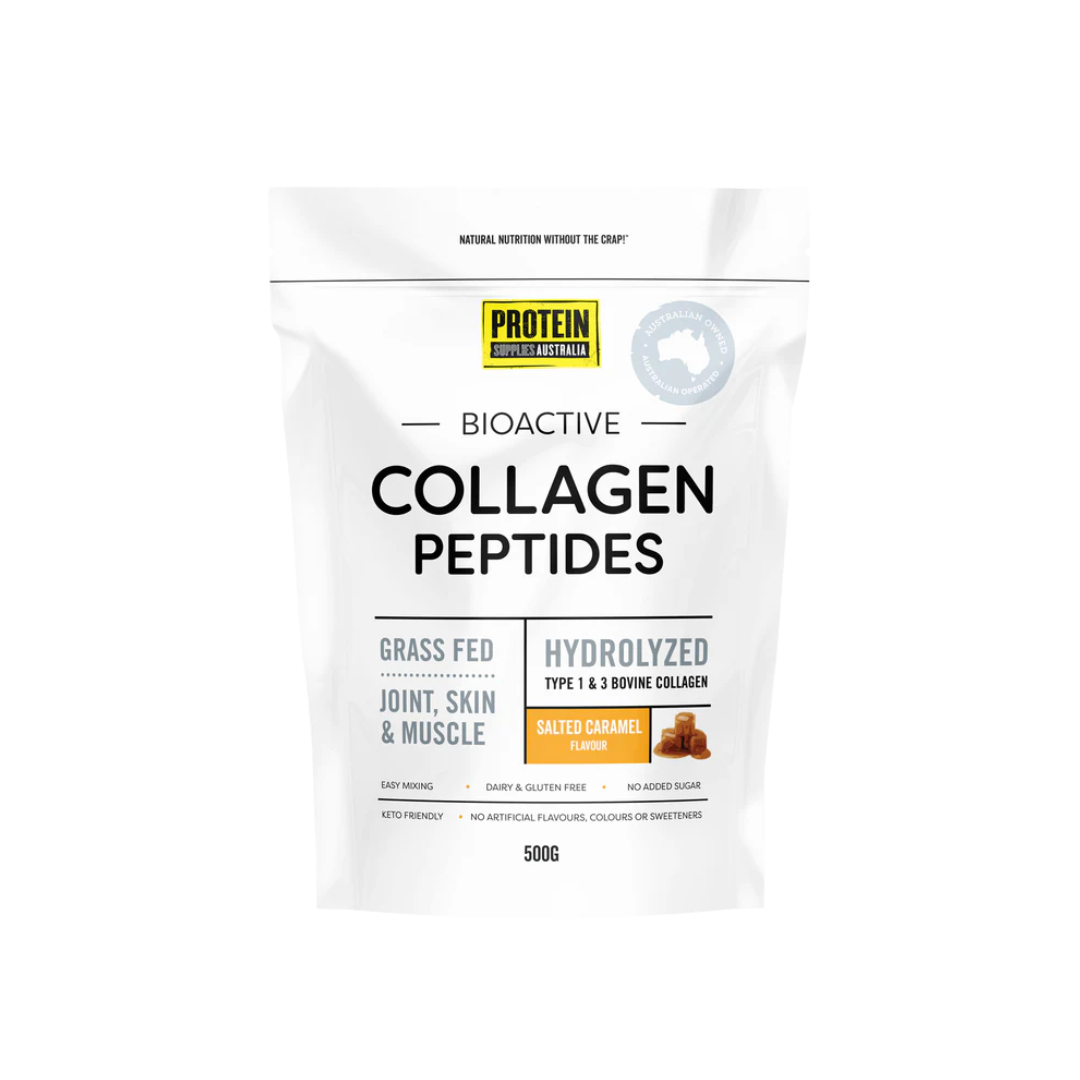Collagen is the most abundant protein in the human body. Found in connective tissues, skin, bones, cartilage, and blood vessels, collagen plays an important role in maintaining the structure, strength, and elasticity of these tissues. It is made up of collagen molecules that form collagen fibrils, which are long, rope-like structures known for their incredible tensile strength.
While there are at least 28 different types of collagen, the majority in the body fall into three main categories: type 1 collagen, type 2 collagen, and type 3 collagen. These are collectively known as fibril-forming collagens due to their ability to form collagen fibrils. Each of these collagen types has a unique structure, function, and clinical significance.
In this article, we’ll explore the biological characteristics of collagen type I, II, and III, how they’re synthesised, their functions in the body, and the post translational modifications that define their roles in health and disease. We’ll also delve into how collagen peptides and supplements can support your health, and the best sources of each collagen type.
Introduction to Collagen
Collagen provides strength, elasticity, and firmness to tissues such as skin, bones, tendons, ligaments, and cartilage. This structural protein is composed of amino acids like glycine, proline, and hydroxyproline, which are arranged in a unique triple helix structure.
This intricate arrangement allows collagen to form strong, flexible fibers that support the body’s connective tissues.
Definition of Collagen
Collagen is a type of structural protein that plays a crucial role in maintaining the integrity and function of various connective tissues. It is composed of amino acids, including glycine, proline, and hydroxyproline, which are arranged in a distinctive triple helix structure.
This structure provides collagen with its characteristic strength and flexibility, enabling it to support and reinforce tissues such as skin, bones, tendons, ligaments, and cartilage. The unique composition and arrangement of amino acids in collagen make it an essential component of the extracellular matrix, contributing to the overall stability and resilience of connective tissues.
Overview of Collagen Types
There are 28 different types of collagen, each with specific functions and structures tailored to their roles in the body. The most common types are Type I, Type II, and Type III.
Type I collagen is the most abundant, found in skin, bones, tendons, and ligaments, providing structural support and tensile strength.
Type II collagen is primarily located in cartilage, where it ensures the resilience and smooth functioning of joints.
Type III collagen is present in blood vessels and muscles, contributing to the elasticity and flexibility of these tissues. Each type of collagen has a unique amino acid sequence and structure, which determines its specific function and properties within the body.
Collagen Type I: The Gold Standard for Strength and Structure
What Is Collagen Type I?
Collagen type I is the most abundant form of collagen in the body. As a principal protein found in connective tissue, accounting for over 90% of the body’s collagen, type I collagen is found primarily in the skin, bones, tendons, ligaments, and other connective tissues. It provides structural support and tensile strength, making it a key player in maintaining the integrity of these tissues.
Structure and Function
Type I collagen is characterised by a triple helix structure composed of two alpha-1 chains and one alpha-2 chain. The triple helix structure is crucial for its role in providing structural integrity to connective tissue. These chains are tightly wound and stabilised by hydrogen bonds, forming rigid fibrils that contribute to the mechanical strength of tissues.
In addition to structural support, collagen I plays a critical role in wound healing and tissue regeneration. It serves as a scaffold for new tissue growth and is often the first type of collagen deposited at wound sites.
Sources and Supplementation
Bovine collagen is one of the best sources of collagen type I, often found in supplements as hydrolysed collagen peptides. Marine collagen also provides a rich source of type I collagen.
Supplementation has been associated with improved skin elasticity, reduced wrinkles, and enhanced collagen production. Supplementation with Collagen Type I can also support the health and integrity of connective tissue.
Clinical Significance
A deficiency in type I collagen can lead to osteogenesis imperfecta (also known as brittle bone disease), a genetic disorder characterised by fragile bones and frequent fractures.
This is caused by mutations in the COL1A1 or COL1A2 genes responsible for encoding the collagen alpha chains. Maintaining healthy levels of Collagen Type I is crucial for the structural integrity of connective tissue.
Collagen Type II: The Joint Protector
What Is Collagen Type II?
Unlike type I, collagen type II is found almost exclusively in cartilage, a specialized form of connective tissue. It is the main component of articular cartilage, which cushions joints and allows for smooth movement. It also appears in the vitreous humour of the eye.
Structure and Function
Type II collagen forms elongated fibrils that are thinner than those of type I but are essential for the tensile strength and resilience of cartilage.
These elongated fibrils are crucial for the tensile strength and resilience of connective tissue, particularly in cartilage. It is produced primarily by chondrocytes, the cells responsible for cartilage formation.
Clinical Significance
Loss of type II collagen is a hallmark of degenerative joint diseases such as osteoarthritis. Supplementation with collagen type II has shown promise in improving joint pain and function.
Studies, including double blind trials, suggest that type II collagen supplements can reduce symptoms of joint stiffness and promote cartilage regeneration. Maintaining healthy levels of Collagen Type II is crucial for the integrity of connective tissue in joints.
Sources and Supplementation
Chicken sternum cartilage is a rich source of type II collagen. Unlike type I, type II is not typically found in bovine or marine collagen, so it requires specific sourcing.
Supplementation with Collagen Type II can support the health and resilience of connective tissue in joints.
Collagen Type III: The Elastic Support
What Is Collagen Type III?
Often found alongside type I, collagen type III contributes to the structure of skin, lungs, intestines, blood vessels, and other connective tissues. It’s particularly important in tissues that require elasticity and flexibility.
Structure and Function
Type III collagen is made up of three alpha-1 chains, forming a triple helix similar to type I, but with different amino acid compositions. The triple helix structure of Collagen Type III is crucial for its role in providing elasticity and flexibility to connective tissue. It is involved in the development of tissues and is especially prevalent during the early stages of collagen synthesis.
As people age, the body’s natural collagen levels decline, and the proportion of type III decreases more significantly than type I, which contributes to skin sagging and wrinkles.
Collagen Synthesis and Type I Collagen
Collagen synthesis is a complex, multi-step process that begins with the transcription of collagen genes and the translation of mRNA into protein. For Type I collagen, this process involves the synthesis of procollagen, where two alpha-1 chains and one alpha-2 chain are combined to form a triple helix structure.
This triple helix is then subjected to post-translational modifications, such as hydroxylation and glycosylation, which are essential for the stability and function of the collagen molecules.
Once these modifications are complete, the mature collagen fibers are secreted into the extracellular matrix, where they assemble into strong, resilient collagen fibrils that provide structural support to connective tissues.
Post-Translational Modifications of Type III Collagen
Type III collagen undergoes a similar synthesis process to Type I collagen, but with distinct post-translational modifications that influence its structure and function. These modifications include hydroxylation and glycosylation, which are crucial for the proper formation and stability of the collagen fibrils.
Type III collagen is predominantly found in blood vessels and muscles, where it plays a vital role in maintaining the integrity and elasticity of these tissues. The specific post-translational modifications of Type III collagen ensure that it can effectively support the dynamic and flexible nature of blood vessels and muscles, highlighting its importance in the overall health and function of the body’s connective tissues.
Clinical Significance
Mutations in the gene COL3A1 can cause Ehlers-Danlos syndrome, a disorder that leads to overly elastic skin, fragile blood vessels, and joint hypermobility.
This underscores the clinical significance of maintaining healthy collagen type III production. Maintaining healthy levels of Collagen Type III is crucial for the elasticity and resilience of connective tissue.
Sources and Supplementation
Like type I, type III collagen is abundant in bovine collagen and often appears in combination supplements. These are hydrolysed into collagen peptides for better absorption and use by the body.
Supplementation with Collagen Type III can support the health and elasticity of connective tissue.
Collagen Synthesis and Post Translational Modifications
The Synthesis Process
Collagen synthesis is a multi-step process involving gene transcription, translation, and extensive posttranslational modification. It begins in fibroblasts, where preprocollagen is synthesised and modified through hydroxylation, glycosylation, and the formation of the triple helix structure.
The molecule is then secreted into the extracellular matrix, where it undergoes further enzymatic processing and assembles into mature collagen fibers. The synthesis of collagen is crucial for maintaining the structural integrity of connective tissue.
Important Modifiers
-
Vitamin C: Crucial for hydroxylation of proline and lysine, without which collagen cannot form properly.
-
Glycine: Every third amino acid in the collagen sequence, essential for tight helix formation.
-
Acetic acid: Sometimes used in lab preparation to solubilise collagen for research and supplement formulations.
These modifiers are essential for the proper formation and function of collagen in connective tissue.
Combining Collagen Types: Can You Take Type 1, 2 & 3 Together?
Yes, it’s possible and often beneficial to combine type I, II, and III collagen. Many comprehensive supplements are formulated to target multiple systems—skin, joints, and internal organs—by combining bovine collagen (rich in type I and III) with chicken collagen (rich in type II).
This multi-type approach supports overall collagen production, especially when combined with other nutrients like vitamin C and zinc.






How Many Protein Powder Per Day is Healthy?
Casein Protein vs Whey: Which Is Better for Your Fitness Goals?